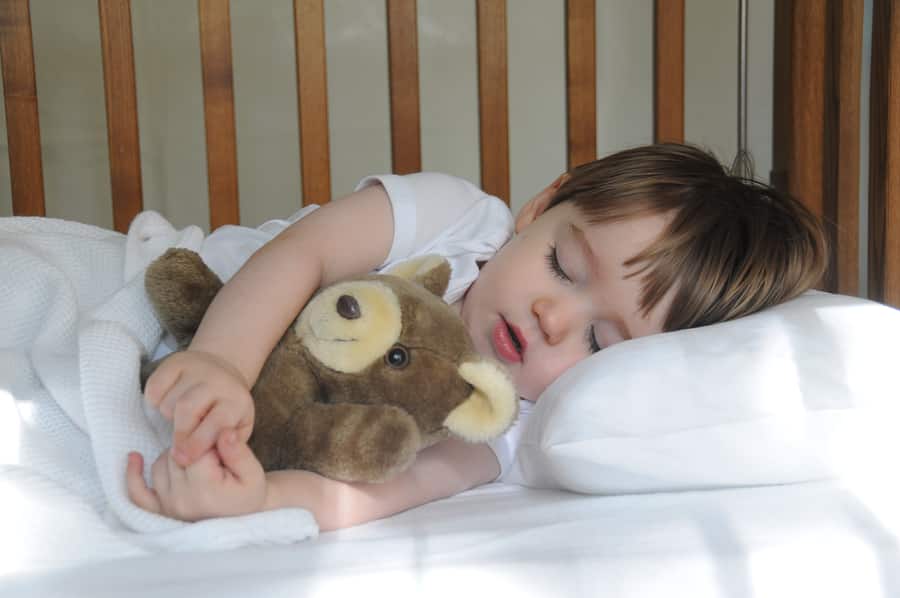Did you know that an estimated 20-30% of school-age children experience a significant sleep disturbance at some point?
(The incidence is even higher for children with certain disorders, including AD/HD, Tourette’s Syndrome, Rett Syndrome, cerebral palsy and autism.)
Why is Sleep so Important for Children?
Put simply, sleep is required to function properly! Poor sleep directly affects physical and mental health.
In children, poor sleep has been linked to daytime behavioural problems and poor school performance (reduced attention span, difficulty with problem solving and completing tasks).
Lack of sleep is also related to daytime sleepiness, which results in irritability (as all parents know only too well!).
If all these reasons were not enough, consider that your child’s sleep difficulties will affect the whole family. If your child is not sleeping well, it’s very likely that parents and other siblings are also not sleeping well.
The lack of sleep will affect you and other family members in the same way it affects your child: you will be tired, irritable, stressed, and therefore will find it difficult to be a good parent during the day.
Sleep Disorders Affecting School-Aged Children
The classification system of the American Psychiatric Association includes a total of 12 sleep disorders that are organised based on their presumed origin:
- Primary sleep disorder
- Sleep disorder related to another mental disorder
- Sleep disorder due to a general medical condition
- Substance-induced sleep disorder
The sleep disorders most commonly seen in children belong to the primary sleep disorder category, which in itself is divided into two groups: dyssomnias and parasomnias.
Dyssomnias relate to disorders that affect the timing, amount, and quality of sleep, while parasomnias relate to abnormal behavioural or physiological events that occur while the person is asleep.
There are also other sleep disorders not included in the above list, such as enuresis (bedwetting) and bruxism (teeth grinding). The table below describes the most commonly reported sleep disorders in children:
[table]
Classification,Description
Dyssomnias,Settling difficulties – child displays anxiety around bedtime~~Night-waking – waking frequently during the night~~Long sleep latency – difficulty falling asleep at night~~Early-waking – waking too early and being unable to go back to sleep~~Day-time sleepiness – child is tired/sleepy during the day
Parasomnias,”Nightmares – distressful/frightening dreams~~Night-terrors – typically occurs in the first few hours of sleep. Child wakes in a highly distressed state but is unable to explain why. Often the child cannot be awakened or comforted, and will not remember the episode in the morning”
Other sleep disorders,Nocturnal enuresis – bedwetting~~Co-sleeping problems – child’s refusal to sleep in their own bed on their own
[/table]
When is a Sleep Difficulty Considered a Problem?
Every child is different and every family is different. So you are really the expert when it comes to your family! If your child’s sleeping pattern is having a significant impact on daily life you should get it checked out.
What Can I do if I Think my Child Has a Sleep Problem?
You should firstly make an appointment with your GP so any underlying medical conditions can be ruled out. If the origin of your child’s sleep problem is behavioural (in other words, your child has learned some inappropriate sleep-related behaviours) you might like to consult a child psychologist qualified in Educational and Developmental Psychology who can help you determine the cause of the behavioural problems and advise you on some strategies to improve your child’s sleep.
References
- Aitken, K.J. (2012). Sleep difficulties and Autism Spectrum Disorders. A guide for parents and professionals. Jessica Kingsley Publishers: GB
- American Psychiatric Association. (2004). Diagnostic and Statistical Manual of Mental Disorders, 4th Edition, Text Revised (DSM-IV-TR). American Psychiatric Publishing, Inc: USA
- Durand, V.M. (1998). Sleep Better! A guide to improving sleep for children with special needs. Brookes Publishing: USA
- Owens, J. A., & Mindell, J.A. (2005). Take change of your child’s sleep: The all-in-one resource for solving sleep problems in kids and teens. Avalon: New York

